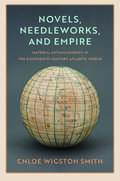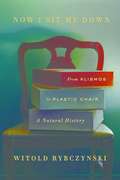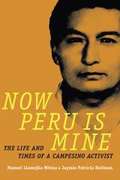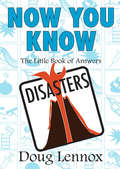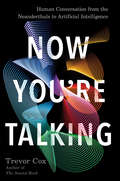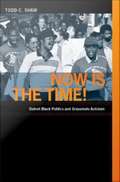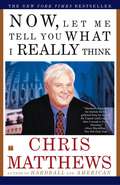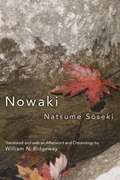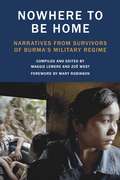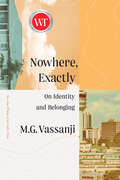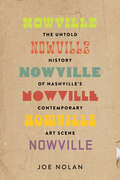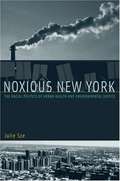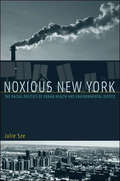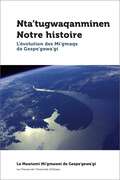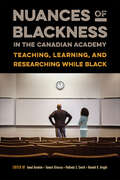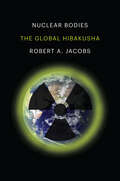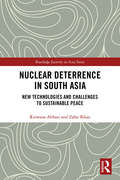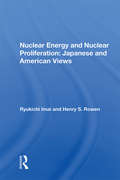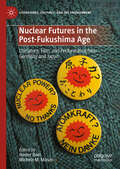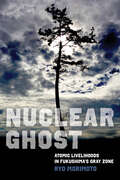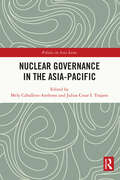- Table View
- List View
Novels, Needleworks, and Empire: Material Entanglements in the Eighteenth-Century Atlantic World (The Lewis Walpole Series in Eighteenth-Century Culture and History)
by Chloe Wigston SmithThe first sustained study of the vibrant links between domestic craft and British colonialism In the eighteenth century, women&’s contributions to empire took fewer official forms than those collected in state archives. Their traces were recorded in material ways, through the ink they applied to paper or the artifacts they created with muslin, silk threads, feathers, and shells. Handiwork, such as sewing, knitting, embroidery, and other crafts, formed a familiar presence in the lives and learning of girls and women across social classes, and it was deeply connected to colonialism. Chloe Wigston Smith follows the material and visual images of the Atlantic world that found their way into the hands of women and girls in Britain and early America—in the objects they made, the books they held, the stories they read—and in doing so adjusted and altered the form and content of print and material culture. A range of artifacts made by women, including makers of color, brought the global into conversation with domestic crafts and consequently placed images of empire and colonialism within arm&’s reach. Together, fiction and handicrafts offer new evidence of women&’s material contributions to the home&’s place within the global eighteenth century, revealing the rich and complex connections between the global and the domestic.
Now I Sit Me Down: A Natural History
by Witold RybczynskiHave you ever wondered where rocking chairs came from, or why cheap plastic chairs are suddenly everywhere? In Now I Sit Me Down, the distinguished architect and writer Witold Rybczynski chronicles the history of the chair from the folding stools of pharaonic Egypt to the ubiquitous stackable monobloc chairs of today. He tells the stories of the inventor of the bentwood chair, Michael Thonet, and of the creators of the first molded-plywood chair, Charles and Ray Eames. He reveals the history of chairs to be a social history--of different ways of sitting, of changing manners and attitudes, and of varying tastes. The history of chairs is the history of who we are. We learn how the ancient Chinese switched from sitting on the floor to sitting in a chair, and how the iconic chair of Middle America--the Barcalounger--traces its roots back to the Bauhaus. Rybczynski weaves a rich tapestry that draws on art and design history, personal experience, and historical accounts. And he pairs these stories with his own delightful hand-drawn illustrations: colonial rockers and English cabrioles, languorous chaise longues, and no-nonsense ergonomic task chairs--they're all here. The famous Danish furniture designer Hans Wegner once remarked, "A chair is only finished when someone sits in it. " As Rybczynski tells it, the way we choose to sit and what we choose to sit on speak volumes about our values, our tastes, and the things we hold dear.
Now Peru Is Mine: The Life and Times of a Campesino Activist
by Jaymie Patricia Heilman Manuel Llamojha MitmaBorn in 1921, Manuel Llamojha Mitma became one of Peru's most creative and inspiring indigenous political activists. Now Peru Is Mine combines extensive oral history interviews with archival research to chronicle his struggles for indigenous land rights and political inclusion as well as his fight against anti-Indian racism. His compelling story--framed by Jaymie Patricia Heilman's historical contextualization--covers nearly eight decades, from the poverty of his youth and teaching himself to read, to becoming an internationally known activist. Llamojha also recounts his life's tragedies, such as being forced to flee his home and the disappearance of his son during the war between the Shining Path and the government. His life gives insight into many key developments in Peru's tumultuous twentieth-century history, among them urbanization, poverty, racism, agrarian reform, political organizing, the demise of the hacienda system, and the Shining Path. The centrality of his embrace of his campesino identity forces a rethinking of how indigenous identity works inside Peru, while the implications of his activism broaden our understanding of political mobilization in Cold War Latin America.
Now We Are Citizens: The Blind in French Society from the Middle Ages to the Century of Louis Braille
by Zina Weygand Emily-Jane Cohen<P>The integration of the blind into society has always meant taking on prejudices and inaccurate representations. <P>Weygand's highly accessible anthropological and cultural history introduces us to both real and imaginary figures from the past, uncovering French attitudes towards the blind from the Middle Ages through the first half of the nineteenth century. Much of the book, however, centers on the eighteenth century, the enlightened age of Diderot's emblematic blind man and of the Institute for Blind Youth in Paris, founded by Valentin Haüy, the great benefactor of blind people. <P>Weygand paints a moving picture of the blind admitted to the institutions created for them and of the conditions under which they lived, from the officially-sanctioned beggars of the medieval Quinze-Vingts to the cloth makers of the Institute for Blind Workers. She has also uncovered their fictional counterparts in an impressive array of poems, plays, and novels. The book concludes with Braille, whose invention of writing with raised dots gave blind people around the world definitive access to silent reading and to written communication.
Now You Know Disasters: The Little Book of Answers
by Doug LennoxEarthquakes, volcanic eruptions, tsunamis and tidal waves, fires, mine cave-ins, bridge collapses, ship sinkings, airplane crashes, explosions, and plagues — natural and human-engineered calamity and catastrophe have many forms and guises. In Now You Know Disasters, Q & A ringmaster Doug Lennox showcases the what, why, when, where, who, and how of everything that’s gone tragically and terribly wrong, past and present. How does a tsunami occur? Why do Canadian engineers wear iron rings? Who was Richter in the Richter scale? What was the worst freshwater ship disaster ever in North America? What is wildfire? Who was Typhoid Mary? How is "ring around the rosie" related to disaster? How did the Halifax Explosion occur? What was the worlds worst airplane crash?
Now You See It: Studies On Lesbian And Gay Film
by Richard DyerRevised for this second edition, Now You See It, Richard Dyer’s groundbreaking study of films by and about lesbians and gay men, now includes an outline of developments in queer cinema since 1990. Placing the book within lesbian and gay film history, Dyer examines familiar titles such as Girls in Uniform, Un Chant D’Amour and Word is Out in their lesbian/gay context, as well as bringing to light many other forgotten, but remarkable films. Each film is examined in detail in relation to both film type and tradition, and the sexual subculture in which it was made. Now featuring a brand new introduction by Juliane Pidduck, this will be an excellent aid to cinema and film studies courses.
Now You're Talking: Human Conversation from the Neanderthals to Artificial Intelligence
by Trevor CoxA history of how humans developed our capacity for conversation—and what might happen now that computers are catching up.Trevor Cox has been described by The Observer as ""a David Attenborough of the acoustic realm."" In Now You're Talking, he takes us on a journey through the wonders of human speech, starting with the evolution of language and our biological capability to speak (and listen), and bringing us up to date with the latest computer technology.Language is what makes us human, and how we speak is integral to our personal identity. But with the invention of sound recording and the arrival of the electrified voice, human communication changed forever; now advances in computer science and artificial intelligence are promising an even greater transformation. And with it come the possibilities to reproduce, manipulate, and replicate the human voice—sometimes with disturbing consequences.Now You're Talking is the fascinating story of our ability to converse. It takes us back to the core of our humanity, asking important questions about what makes us human and how this uniqueness might be threatened. On this illuminating tour we meet vocal coaches and record producers, neuroscientists and computer programmers, whose experience and research provide us with a deeper understanding of something that most of us take for granted—our ability to talk and listen.
Now in November
by Josephine W. Johnson Nancy HoffmanBrilliant, evocative, poetic, savage, this first novel (1934) depicts a white, middle-class urban family that is turned into dirt-poor farmers by the Depression and the great drought of the thirties. <P><P> The novel moves through a single year and, at the same time, a decade of years, from the spring arrival of the family at their mortgaged farm to the winter 10 years later, when the ravages of drought, fire, and personal anguish have led to the deaths of two of the five. Like Ethan Frome, the relatively brief, intense story evokes the torment possible among people isolated and driven by strong feelings of love and hate that, unexpressed, lead inevitably to doom. Reviewers in the thirties praised the novel, calling its prose "profoundly moving music," expressing incredulity "that this mature style and this mature point of view are those of a young women in her twenties," comparing the book to "the luminous work of Willa Cather," and, with prescience, suggesting that it "has that rare quality of timelessness which is the mark of first-rate fiction."<P><P> Pulitzer Prize Winner
Now is the Time!: Detroit Black Politics and Grassroots Activism
by Todd C. ShawIn Now Is the Time! Todd C. Shaw delves into the political strategies of post-Civil Rights Movement African American activists in Detroit, Michigan, to discover the conditions for effective social activism. Analyzing a wide range of grassroots community-housing initiatives intended to revitalize Detroit's failing urban center and aid its impoverished population, he investigates why certain collective actions have far-reaching effects while others fail to yield positive results. What emerges is EBAM (Effective Black Activism Model), Shaw's detailed political model that illuminates crucial elements of successful grassroots activism, such as strong alliances, strategic advantages, and adaptive techniques. Shaw uses the tools of social movement analysis, including the quantitative analysis of budgets, electoral data, and housing statistics, as well as historical research and personal interviews, to better understand the dilemmas, innovations, and dynamics of grassroots activism. He begins with a history of discriminatory housing practices and racial divisions that deeply affected Detroit following the Second World War and set the stage for the election of the city's first black mayor, Coleman Young. By emphasizing downtown redevelopment, Mayor Young's administration often collided with low-income housing advocates. Only through grassroots activism were those advocates able to delay or derail governmental efforts to demolish low-income housing in order to make way for more upscale development. Shaw then looks at present-day public housing activism, assessing the mixed success of the nationally sponsored HOPE VI project aimed at fostering home ownership in low-income areas. Descriptive and prescriptive, Now Is the Time! traces the complicated legacy of community activism to illuminate what is required for grassroots activists to be effective in demanding public accountability to poor and marginalized citizens.
Now, Let Me Tell You What I Really Think
by Christopher MatthewsMatthews tells us about his "God and Country" Catholic school education in Philadelphia, complete with Cold War air-raid drills, and his early enthusiasm for politics. He shares with us his life's adventures.
Nowaki
by William N. Ridgeway Sôseki NatsumeMichigan Monograph Series in Japanese Studies No. 72 Shirai Dôya is a man of letters, a man of principles. His principles sometimes stand in the way of his teaching career, but his writing allows him to openly address "today's youth" with stern conviction--although he is still unable to make a comfortable living from his writing. Two youths in particular show interest in his ideas: the tubercular impoverished Takayanagi, an aspiring writer himself (and former student of Dôya's, as it turns out), and his rich friend, the dandy Nakano. The lives and minds of the three men come together in ways that are both commonplace and surprising. The setting--mainly Tokyo of one hundred years ago--and the preoccupations of these characters will appear distinctly familiar, even today.
Nowhere to Be Home
by Mary Robinson Maggie Lemere Zoe WestDecades of military oppression in Burma have led to the systematic destruction of thousands of ethnic minority villages, a standing army with one of the world's highest number of child soldiers, and the displacement of millions of people.Nowhere to Be Home is an eye-opening collection of oral histories exposing the realities of life under military rule. In their own words, men and women from Burma describe their lives in the country that Human Rights Watch has called "the textbook example of a police state."
Nowhere, Exactly: On Identity and Belonging
by M.G. VassanjiFrom one of Canada's most celebrated writers, two-time Giller Prize winner M.G. Vassanji, comes a thoughtful meditation on what it means to belong in the world.Home is never a single place, entirely and unequivocally. It is contingent. The abstract "nowhere," then, is the true home.M.G. Vassanji has been exploring the immigrant experience for over three decades, drawing deeply on his own transnational upbringing and intimate understanding of the unique challenges and perspectives born from leaving one's home to resettle in a new land. The question of identity, of how to configure and see oneself within this new land, is one such challenge faced. But Vassanji suggests that a more fundamental and slippery endeavour than establishing one's identity is how, if ever, we can establish a sense of belonging. Can we ever truly belong in this new home? Did we ever truly belong in the home we left? Where exactly do we belong? For many, the answer is nowhere exactly. Combining brilliant prose, thoughtful, candid observation, and a lifetime of exploring how we as individuals are shaped by the places and communities in which we live and the history that haunts them, Nowhere, Exactly examines with exquisite sensitivity the space between identity and belonging, the immigrant experience of both loss and gain, and the weight of memory and nostalgia, guilt and hope felt by so many of those who leave their homes in search of new ones.
Nowville: The Untold History of Nashville's Contemporary Art Scene
by Joe NolanThis is the origin story of Nashville&’s surging contemporary art scene told by the ones who were there before anyone else. Not a story about commercial spaces or official institutions—this is the story of moldy warehouse studios and improvised galleries, happy-kegger after-parties and front lawn art sales, exhibitions in apartment living rooms and secret art displays hidden in plain sight.Nowville is an oral history of the Nashville art scene beginning in the 1990s. Author Joe Nolan tracks down the city&’s art punks, art monks, radical art students, and visionary pioneers to share what made their moments in Nashville so special. He also offers insights into how this homespun movement powered by DIY innovating came to be a thriving creative community and a cornerstone of the city&’s contemporary allure.
Noxious New York: The Racial Politics of Urban Health and Environmental Justice
by Julie SzeDrawing extensively on fieldwork and interviews with community members and activists, Sze illuminates the complex mix of local and global issues that fuels environmental justice activism.
Noxious New York: The Racial Politics of Urban Health and Environmental Justice (Urban and Industrial Environments)
by Julie SzeExamines the culture, politics, and history of the movement for environmental justice in New York City, tracking activism in four neighborhoods on issues of public health, garbage, and energy systems in the context of privatization, deregulation, and globalization. Racial minority and low-income communities often suffer disproportionate effects of urban environmental problems. Environmental justice advocates argue that these communities are on the front lines of environmental and health risks. In Noxious New York, Julie Sze analyzes the culture, politics, and history of environmental justice activism in New York City within the larger context of privatization, deregulation, and globalization. She tracks urban planning and environmental health activism in four gritty New York neighborhoods: Brooklyn's Sunset Park and Williamsburg sections, West Harlem, and the South Bronx. In these communities, activism flourished in the 1980s and 1990s in response to economic decay and a concentration of noxious incinerators, solid waste transfer stations, and power plants. Sze describes the emergence of local campaigns organized around issues of asthma, garbage, and energy systems, and how, in each neighborhood, activists framed their arguments in the vocabulary of environmental justice. Sze shows that the linkage of planning and public health in New York City goes back to the nineteenth century's sanitation movement, and she looks at the city's history of garbage, sewage, and sludge management. She analyzes the influence of race, family, and gender politics on asthma activism and examines community activists' responses to garbage privatization and energy deregulation. Finally, she looks at how activist groups have begun to shift from fighting particular siting and land use decisions to engaging in a larger process of community planning and community-based research projects. Drawing extensively on fieldwork and interviews with community members and activists, Sze illuminates the complex mix of local and global issues that fuels environmental justice activism.
Nta’tugwaqanminen - Notre histoire: L'évolution des Mi'gmaqs de Gespe'gewa'gi (Études canadiennes)
by Gespe’gewa’gi Mi’gmawei MawiomiNta’tugwaqanminen-Notre histoire présente la vision, la relation à la terre, l’occupation historique et actuelle du territoire, de même que les noms de lieux et ce que révèlent ceux-ci sur l’occupation ancestrale du territoire. Il porte sur les traités conclus avec la Couronne britannique, sur le respect de ces traités par la nation mi'gmaque et le non-respect de ceux-ci par les divers paliers de gouvernement. Il explore la dépossession des Mi’gmaqs du Gespe’gewa’gi (Nord du Nouveau-Brunswick et péninsule gaspésienne) dans la foulée de la colonisation illégale européenne, puis le développement de la péninsule par ces colons européens, à leur avantage. Il aborde également la question des droits et titres des Mi’gmaqs sur leur territoire. Nta’tugwaqanminen montre que les Mi’gmaqs du Gespe’gewa’gi occupent ce territoire depuis toujours, qu’ils en étaient les seuls occupants avant la colonisation européenne, et qu’ils occupent sans interruption depuis ce temps. Deux voix émergent de cet ouvrage : celle des Mi’gmaqs du Gespe’gewa’gi, et de leurs aînés, qui sont les narrateurs de leur histoire collective, et celle des chercheurs qui ont étudié cette histoire, notamment en menant une enquête toponymique pour découvrir les indicateurs de mouvements migratoires.Une coédition avec Fernwood Publishing.Publié en français
Nuances of Blackness in the Canadian Academy: Teaching, Learning, and Researching while Black
by Awad Ibrahim, Tamari Kitossa, Malinda S. Smith and Handel K. WrightThe essays in Nuances of Blackness in the Canadian Academy make visible the submerged stories of Black life in academia. They offer fresh historical, social, and cultural insights into what it means to teach, learn, research, and work while Black. In daring to shift from margin to centre, the book’s contributors confront two overlapping themes. First, they resist a singular construction of Blackness that masks the nuances and multiplicity of what it means to be and experience the academy as Black people. Second, they challenge the stubborn durability of anti-Black tropes, the dehumanization of Blackness, persistent deficit ideologies, and the tyranny of low expectations that permeate the dominant idea of Blackness in the white colonial imagination. Operating at the intersections of discourse and experience, contributors reflect on how Blackness shapes academic pathways, ignites complicated and often difficult conversations, and reimagines Black pasts, presents, and futures. This unique collection contributes to the articulation of more nuanced understandings of the ways in which Blackness is made, unmade, and remade in the academy and the implications for interrelated dynamics across and within post-secondary education, Black communities in Canada, and global Black diasporas.
Nuclear Bodies: The Global Hibakusha
by Robert A. JacobsThe Cold War reconsidered as a limited nuclear war &“Inexorable clarity and care for his fellow humans mark Robert Jacobs's guide to the Cold War as a limited nuclear war, whose harms disfigure any possible future.&”—Norma Field, author of In the Realm of a Dying Emperor: Japan at Century&’s End In the fall of 1961, President Kennedy somberly warned Americans about deadly radioactive fallout clouds extending hundreds of miles from H‑bomb detonations, yet he approved ninety‑six US nuclear weapon tests for 1962. Cold War nuclear testing, production, and disasters like Chernobyl and Fukushima have exposed millions to dangerous radioactive particles; these millions are the global hibakusha. Many communities continue to be plagued with dire legacies and ongoing risks: sickness and early mortality, forced displacement, uncertainty and anxiety, dislocation from ancestors and traditional lifestyles, and contamination of food sources and ecosystems. Robert A. Jacobs re‑envisions the history of the Cold War as a slow nuclear war, fought on remote battlegrounds against populations powerless to prevent the contamination of their lands and bodies. His comprehensive account necessitates a profound rethinking of the meaning, costs, and legacies of our embrace of nuclear weapons and technologies.
Nuclear Deterrence in South Asia: New Technologies and Challenges to Sustainable Peace (Routledge Security in Asia Series)
by Zafar Khan Rizwana AbbasiThis book explores evolving patterns of nuclear deterrence, the impact of new technologies, and changing deterrent force postures in the South Asian region to assess future challenges for sustainable peace and stability. Under the core principles of the security dilemma, this book analyzes the prevailing security environment in South Asia and offers unilateral, bilateral, and multilateral frameworks to stabilize peace and ensure deterrence stability in the South Asian region. Moreover, contending patterns of deterrence dynamics in the South Asian region are further elaborated as becoming inextricably interlinked with the broader security dynamics of the Asia-Pacific region and the interactions with the United States and China’s Belt and Road Initiative. As India and Pakistan are increasingly becoming part of the competing strategies exercised by the United States and China, the authors analyze how strategic uncertainty and fear faced by these rival states cause the introduction of new technologies which could gradually drift these competing states into more serious crises and military conflicts. Presenting innovative solutions to emerging South Asian challenges and offering new security mechanisms for sustainable peace and stability, this book will be of interest to academics and policymakers working on Asian Security studies, Nuclear Strategy, and International Relations.
Nuclear Energy And Nuclear Proliferation: Japanese And American Views
by Ryukichi ImaiThough the Carter administration came to office committed both to good U.S.-Japanese relations and to a more stringent nuclear nonproliferation policy, it soon became clear that these objectives were at cross-purposes, and that the dispute over nuclear nonproliferation policy threatened to shake the alliance between the two countries. Professors Im
Nuclear Futures in the Post-Fukushima Age: Literature, Film, and Performance from Germany and Japan (Literatures, Cultures, and the Environment)
by Hester Baer Michele M. MasonThis groundbreaking volume explores new artistic forms that emerged in German-speaking Europe and Japan in the wake of the 2011 Fukushima nuclear power plant disaster. Considering the cultural specificity of post-3.11 literature, poetry, theater, and film, while also attending to moments of crossing, hybridity, and transference, Nuclear Futures in the Post-Fukushima Age offers a critical model for examining the intertwining of transnational connection and ecological contamination in a global present marked by renewed nuclear threat. Bringing together incisive readings by eminent scholars of Germany and Japan as well as a newly translated work by Yōko Tawada, the volume offers a comparative humanities approach that is essential for reframing debates about environmental crisis and nuclear risk.
Nuclear Ghost: Atomic Livelihoods in Fukushima's Gray Zone (California Series in Public Anthropology #56)
by Ryo Morimoto"There is a nuclear ghost in Minamisōma." This is how one resident describes a mysterious experience following the 2011 nuclear fallout in coastal Fukushima. Investigating the nuclear ghost among the graying population, Ryo Morimoto encounters radiation’s shapeshifting effects. What happens if state authorities, scientific experts, and the public disagree about the extent and nature of the harm caused by the accident? In one of the first in-depth ethnographic accounts of coastal Fukushima written in English, Nuclear Ghost tells the stories of a diverse group of residents who aspire to live and die well in their now irradiated homes. Their determination to recover their land, cultures, and histories for future generations provides a compelling case study for reimagining relationality and accountability in the ever-atomizing world.
Nuclear Governance in the Asia-Pacific (Politics in Asia)
by Mely Caballero-Anthony Julius Cesar I. TrajanoThe contributors to this book explore approaches to building a framework for nuclear governance in the Asia-Pacific – encompassing nuclear safety, security, and safeguards/non-proliferation. Nuclear governance collaboration offers an avenue for states in the Asia-Pacific to tackle the emerging opportunities for and challenges to the peaceful uses of nuclear energy and the civilian applications of nuclear and radioactive materials. The nature of national actions, bilateral initiatives and regional cooperation in capacity building taking place in East Asia provides a good foundation to pursue a more robust collaborative framework for nuclear governance in the wider Asia-Pacific region. The contributors to this book explore the most critical nuclear safety, security and non-proliferation issues faced by states in the Asia-Pacific and the growing cooperation spearheaded by Southeast Asian countries, China, Japan, South Korea and the United States. This book is a valuable read for academics working on security and strategic studies, international relations, non-traditional security issues as well as nuclear-related issues.
Nuclear Meltdown, USA: Could Japan's Power Plant Disaster Happen Here?
by Chanan TigaySitting near four significant fault lines on the coastline of California, Diablo Canyon is just one of 65 nuclear power plants in the United States. After the nuclear meltdown in Fukushima, Japan, Americans are now asking, "Could it happen here?" This e-book original, based on an in-depth investigation commissioned exclusively for Prevention magazine by the award-winning photojournalist team of Chanan Tigay and Colin Finlay, explores the risks--to our planet and ourselves--of the plant and its impact on the people who live and work in the "happiest place in America."
